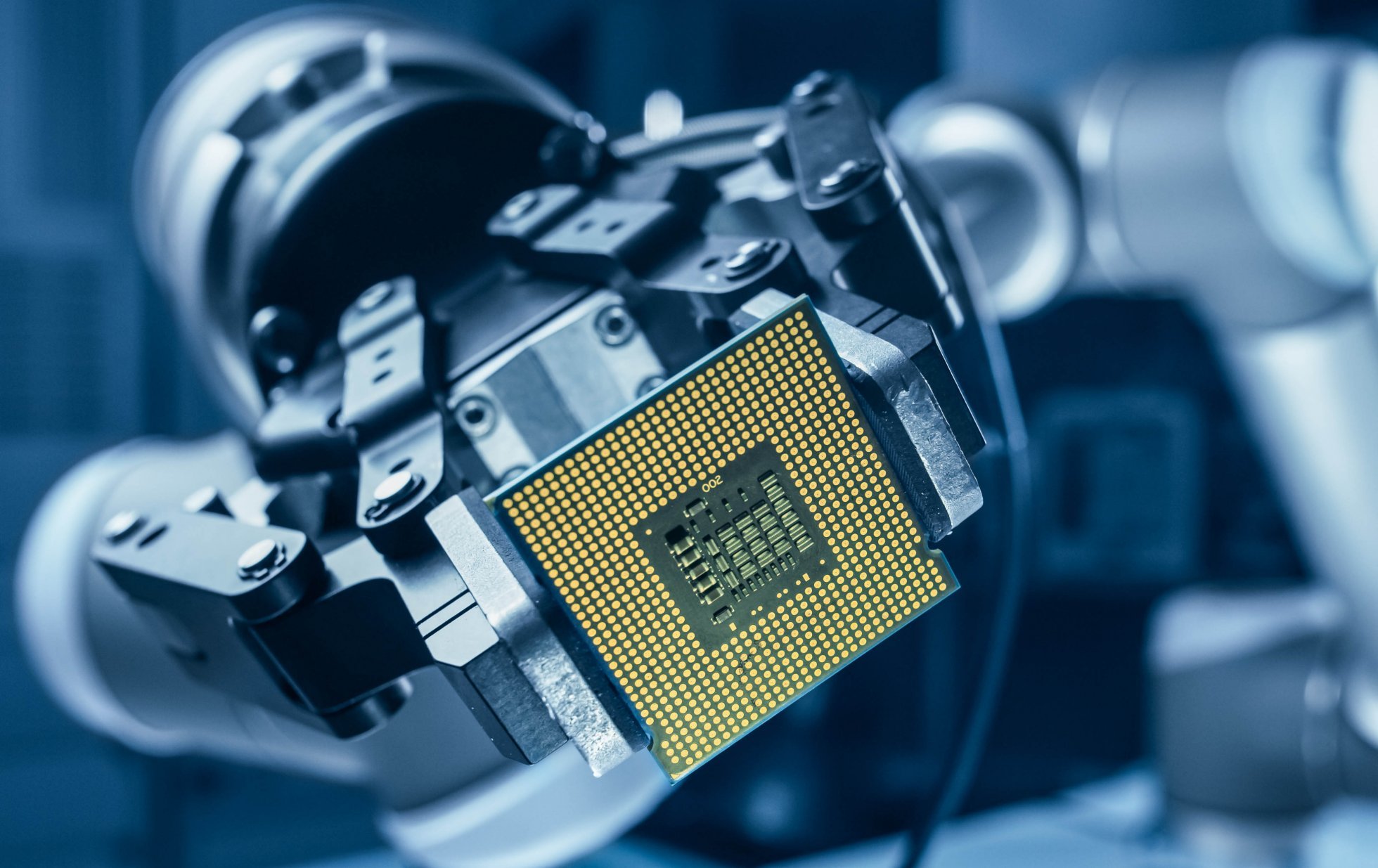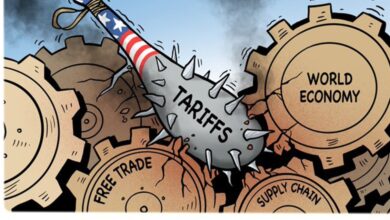PM Narendra Modi’s 50% Aid Plan: An Attractive Proposition for Global Chip Firms

PM Narendra Modi’s 50% Aid Plan: An Attractive Proposition for Global Chip Firms
Several leaders from the semiconductor sector, including Foxconn Chairman Young Liu, attended the SemiconIndia annual conference that PM Modi was speaking at in Gujarat.
On Friday, Prime Minister Narendra Modi stated that India is creating a complete ecosystem to promote the industry’s growth and will lead the way in attracting investments to the sector. This announcement dismisses any worries that India may need to progress more quickly in its pursuit of becoming a key player in the international semiconductor value chain.
![]()
We are constantly implementing policy reforms, he added, “to hasten the growth of the semiconductor sector in the nation.” The prime minister reaffirmed that particular incentives, such as consistent budgetary assistance of 50% across all technological nodes, will be used to foster local chip manufacturing.
Young Liu, the chairman of Foxconn, and other leaders from the semiconductor sector were present at the SemiconIndia annual conference in Gujarat, where Modi was speaking.
The government is accepting new applications under a $10 billion incentive plan approved by the Union Cabinet in December 2021. The bill, which seeks to create a “sustainable semiconductor and display ecosystem in the country,” encourages the development of silicon semiconductor fabs, display fabs, compound semiconductors, silicon photonics, sensors, and semiconductor packaging and design.

Foxconn recently withdrew from a $19.5 billion semiconductor joint venture with Vedanta, citing the project’s sluggish pace. Concerns regarding the growth of India’s semiconductor ambitions have been expressed in light of this event and the cancellation of Israel’s Tower Semiconductor’s proposal to spend $3 billion on a chip facility there.
Liu has announced that the largest electronics manufacturer in the world will be investing $2 billion in India within the next five years. Additionally, US chipmaker Advanced Micro Device (AMD) will invest $400 million in the country during the same period. The electronics manufacturer will now solely work on their plans for India. In Bengaluru, AMD claimed it would erect its largest design facility.

Modi said the semiconductor sector would experience “exponential growth in India.”
“A year ago, individuals used to query the merits of funding the Indian semiconductor industry. Now they inquire why they shouldn’t invest in India,” he added, highlighting India as “a trustworthy and reliable partner in the semiconductor supply chain.”
The prime minister said plans had been made to launch semiconductor design courses at as many as 300 colleges nationwide. “Industry 4.0 is becoming more visible to the world today. The ambitions of the inhabitants of a specific location have served as the foundation for every industrial revolution the world has experienced. According to him, the first industrial revolution and the American ideal had a similar relationship.
The fourth industrial revolution and Indian ambitions, Modi added, “have the same relationship today.”

Foxconn, which assembles Apple’s iPhones, is reportedly considering the possibility of a new chip facility in Gujarat and negotiating a $200 million components plant in Tamil Nadu.
The majority of the world’s chip manufacturing is currently based in Taiwan. By 2028, the Indian chip industry is anticipated to nearly double, reaching $80 billion.
India’s primarily young populace would benefit from chipmaking businesses by getting work. At the occasion on Friday, Sanjay Mehrotra, CEO of Micron Technology, said that a proposed $2.7 billion semiconductor testing and packaging facility in Gujarat will aid in the creation of roughly 5,000 employees in the region, according to Reuters.
India has long been known as a software superpower, and now, under the leadership of Prime Minister Narendra Modi, it aims to establish itself as a significant player in the semiconductor industry. In a strategic and economically advantageous move, PM Modi has rolled out a bold new initiative to lure global chip manufacturers to India. This comes as part of a broader effort to strengthen the country’s electronics and telecoms sector, lessen its dependency on imports, and foster the growth of high-tech manufacturing.

As part of the initiative, the Indian Government has unveiled an aid plan covering up to 50% of the capital expenditure incurred by chip-making companies planning to set up fabrication units in India. The primary aim of this move is to make India a highly competitive destination for chip manufacturing and to reduce the country’s import bill. The policy targets international semiconductor majors, encouraging them to establish their production units in India.
India is one of the largest consumers of electronic devices in the world. However, it relies heavily on imported chips due to a need for domestic semiconductor manufacturing facilities. This dependency was highlighted during the global chip shortage crisis, severely disrupting several sectors, including the automotive and consumer electronics industries.
By fostering a robust semiconductor manufacturing industry, India can secure its supply chain, spur innovation, and drive economic growth. Furthermore, it would offer a more sustainable long-term solution to the current situation by reducing vulnerability to international market fluctuations and geopolitical instabilities.
The aid plan proposed by PM Modi has been lauded as a strategic move with immense potential for attracting international investment and creating jobs. India’s growing middle class, a vast pool of engineering talent, and increasing digitization across sectors make it a promising market for chip manufacturers.

However, the plan has its challenges. Semiconductor fabrication facilities, or fabs, require billions of dollars in investment, highly skilled labour, continuous power supply, and access to clean water. Building such a sophisticated manufacturing infrastructure can be a daunting task. Moreover, the country will face stiff competition from established chip manufacturing hubs like Taiwan, South Korea, and China.
Despite these challenges, the Indian government’s initiative shows a strategic vision for the future. India is expected to capitalize on its strong IT and software services sector to bolster the proposed semiconductor industry. The initiative aligns with the “Make in India” program, which aims to turn India into a worldwide manufacturing centre.
India’s journey into the semiconductor manufacturing industry will require strategic planning, significant investment, and a long-term commitment. However, the plan outlined by PM Modi represents a substantial step in that direction, demonstrating the country’s determination to become a significant player in the high-tech manufacturing sector.

The semiconductor aid plan unveiled by PM Modi promises to bring a shift in India’s manufacturing landscape. If successful, it could mark a new chapter in India’s journey towards self-reliance and place it firmly on the global electronics manufacturing map. However, realizing this ambitious plan will hinge on the ability of the government to attract international chipmakers effectively, overcome infrastructural challenges, and maintain a conducive policy environment.




